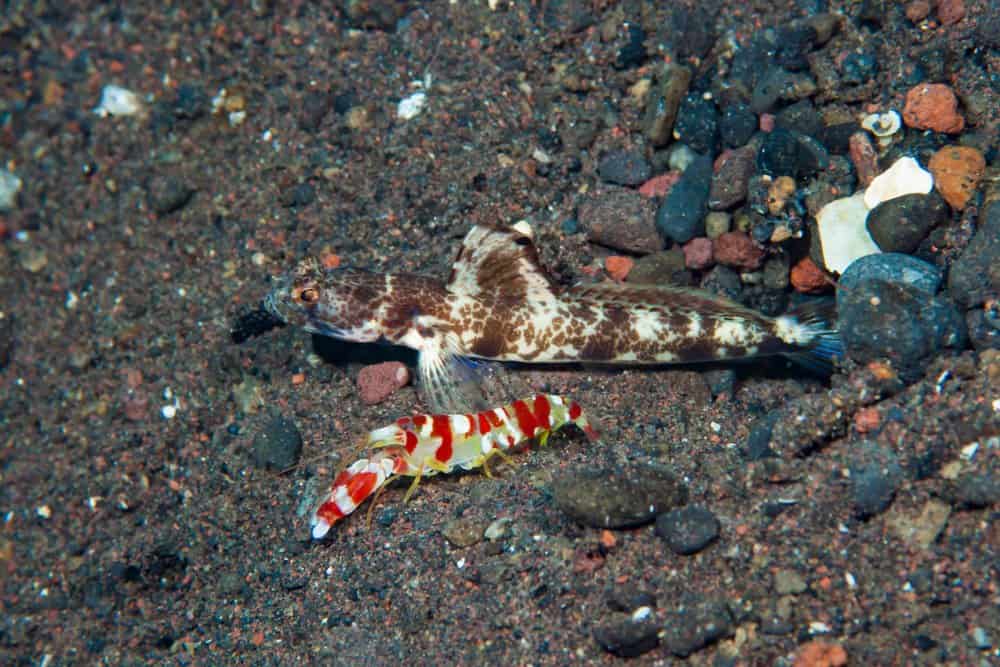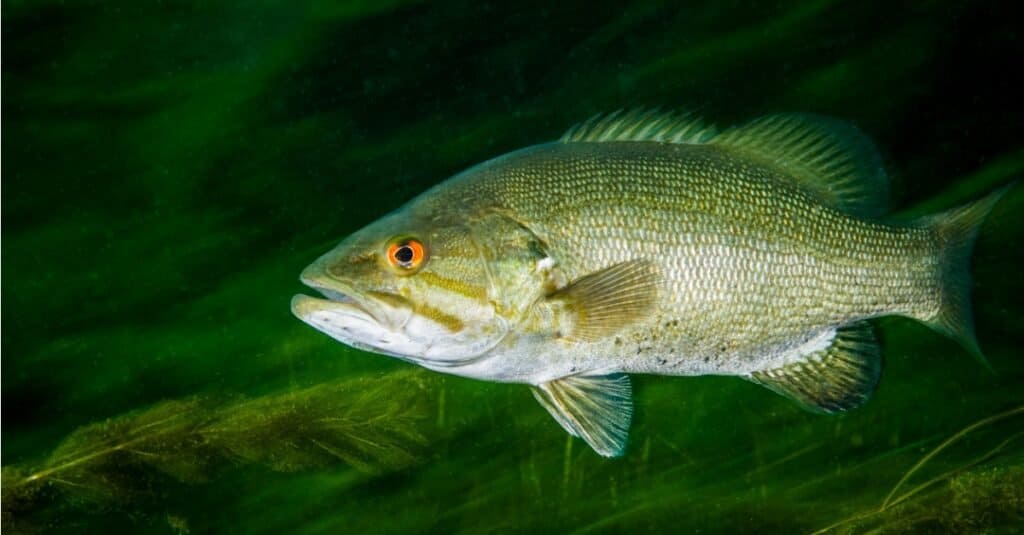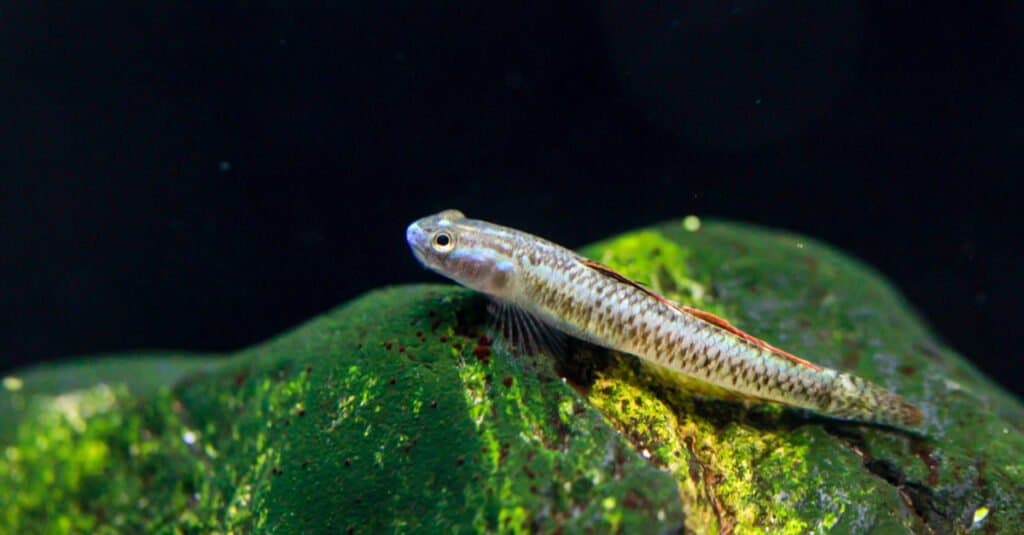Some Goby species are toxic.
Advertisement
Goby Fish Scientific Classification
Read our Complete Guide to Classification of Animals.
Goby Fish Conservation Status
Goby Fish Facts
- Prey
- Varies by species, but they eat both plants and animals.
- Name Of Young
- Larvae
- Fun Fact
- Some Goby species are toxic.
- Estimated Population Size
- Varies by species. Some are considered to be invasive pests while other species, such as the Tidewater Goby, are endangered.
- Distinctive Feature
- They prefer brackish water.
- Habitat
- Freshwater, saltwater, brackish water
- Predators
- Seabirds, larger fish
- Diet
- Omnivore
- Type
- Fish
- Common Name
- Goby fish
- Special Features
- All Goby fish have fused pelvic fins that create a functional suction cup at the back of their body
- Location
- The Caspian and Black Seas. In the Greak Lakes, Michigan classifies them as an invasive species.
Goby Fish Physical Characteristics
View all of the Goby Fish images!
Can you imagine a fish family reunion with over 2,000 members?
That’s what a Goby Fish family gathering might look like. As one of the largest scientific families in the fish world, Goby Fish make great pets in your aquarium. Others make delicious meals. With over 2,000 species, this diverse family of fish has many interesting facts.
5 Goby Fish Facts
- The family of Goby Fish includes more than 2,000 species.
- Goby fish like brackish water and often live near coral reefs.
- Some species of Goby fish are so small that they are around 1 centimeter long.
- Goby fish make excellent aquarium pets, especially when adopted in mated pairs.
- A few species of Goby fish are poisonous when eaten and contain a harmful neurotoxin.
Goby Fish Classification and Scientific Name
The name Goby fish is commonly given to members of the Gobiidae family. There are over 2,000 species within the family and 200 genera. Some of the best-known species include the Yellowline Goby (Elacatinus figaro), Sharknose Goby (Elacatinus evalynae), and Diamond Watchman Goby (Valenciennea puellaris). These are all popular aquarium fish. Even though they are from different genera and species, they share similarities.
Goby fish belong to the Gobiiformes order. There are fish in this order that live in saltwater as well as those that live in freshwater. They are part of the Actinopterygii class. These are also known as ray-finned fish and make up more than 50% of all vertebrates. Fish in this class have fins with bony spines running through them, also called rays. They are part of the Chordata phylum and Animalia kingdom.
Goby Fish Appearance
With so many different species, how are Goby fish distinguished from other types of swimming creatures? They have one distinct physical characteristic that marks them as Goby fish. All Gobies have fused pelvic fins. This creates a sucker at the back of their body. This sucker is functional as well as physically distinctive. Goby fish use it to stick to coral and rocks in the wild. These fish in aquariums are even known to stick to the glass or plastic sides of their habitat using their fused pelvic fin.
Goby fish vary in size but most are smaller fish. The Dwarf Pygmy Goby (Pandaka pygmaea) is the smallest Goby and one of the smallest fish known to exist. The largest Dwarf Pygmy Gobies are female and they get up to 1.5 centimeters long. Males are a bit smaller, around 1 centimeter. On the other end of the spectrum is the Giant Goby (Gobius cobitis). It lives in the Atlantic, Black Sea, and the Mediterranean. They grow up to 11 inches.

The Mottled Shrimp-goby is white with orange spots that are outlined in brown. They have a symbiotic relationship with alpheid shrimp, which are nearly blind, that dig dens that they share with the gobies.
©Francesco_Ricciardi/Shutterstock.com
Goby Fish Distribution, Population, and Habitat
Goby fish favor brackish water, where saltwater and freshwater meet. Some live in saltwater primarily while many are found in freshwater. With such diversity of species within the Goby fish family, they can be found in many places across the globe. They often live around coral reefs, where they make up between 20 and 30 percent of the inhabitants.
Because they are small, Goby fish don’t need a lot of space to swim around. They are often seen in streams and even tidepools. In their native environments, Goby maintain a robust population and are a vital part of the ecosystem. Some Goby have found their way to new habitats and become an invasive species. For example, the Round Goby (Apollonia melanostomus) is now found in the Great Lakes, outside of their natural habitat of the Caspian Sea and Black Sea. Michigan classifies them as an invasive species that is causing significant damage to the ecosystem.
Goby Fish Predators and Prey
Goby are small fish and make easy prey for larger fish as well as sea birds. The same Round Goby that are invasive in the Great Lakes are eaten by Smallmouth Bass, Largemouth Bass, and other bigger fish. Birds such as gulls and cormorants also go after these small fish.
These fish typically eat plants and animals, although their ideal diet varies based on their size. Smaller Goby fish species eat smaller organisms and plants. The smallest species, such as the Dwarf Pygmy Goby fish, eat plankton and other small organisms. Larger Goby fish eat plants and animals that they can get near the reef where they live. The Giant Goby likes to eat algae and crustaceans such as small crabs.
In aquariums, Goby fish are often fed small sea worms and even tiny brine shrimp. Most experts recommend feeding Goby smaller meals multiple times per day rather than one larger meal.

Small and largemouth bass are carnivorous, and eat smaller fish such as the Goby.
©iStock.com/RLSPHOTO
Goby Fish Reproduction and Lifespan
Not all species of Goby fish reproduce in the same way but the vast majority lay their eggs on the reef or algae where they live. They can lay up to thousands of eggs at a time. Both male and female Goby fish parents take care of the eggs as they mature. The males guard the eggs from predators and fan them to increase the concentration of oxygen around the eggs. The females make sure that the area is safe.
When they hatch, baby Goby fish are larvae. The smallest Goby fish have teeny tiny babies, making them very vulnerable to environmental elements and predators. They often float away on even a slight current, sometimes returning after days or weeks when they are more mature.
Goby fish can live up to 10 years, although it varies significantly by species. Even Goby fish in aquariums can live a long time. They can be territorial and many species live in mated pairs. When adopting a Goby fish for your aquarium, many pet owners recommend getting a mated pair. Just be ready to witness the birth of baby Goby fish!

Not all species of Goby fish reproduce in the same way but the vast majority lay their eggs on the reef or algae where they live.
©chonlasub woravichan/Shutterstock.com
Goby Fish in Fishing and Cooking
Goby fish are a bit like mushrooms. Some are safe to eat and others will cause significant health problems. The National Institutes of Health conducted a study of Gobi species and how they related to cases of Tetrodotoxin poisoning. Tetrodotoxin is a neurotoxin that can cause problems with breathing, nausea and vomiting, and general weakness. In severe cases, it can even cause death. The study found that certain species of Goby, including Yongeichthys kaohsiung which is native to Taiwan, contain this toxin.
When preparing Goby fish, most recipes call for you to fry the fish similar to serving sardines or other small fish. It is not a popular fish to cook and eat, however. It is more often caught for use in aquariums.
Goby Fish Population
With so many species, it’s hard to pinpoint exact population data for the entire family of Goby fish. While many maintain a healthy population and even expand to new areas where they become invasive, such as the Round Goby, others have more trouble.
The Tidewater Goby (Eucyclogobius newberryi) is considered endangered by the Endanged Species Protection Program. These Gobies live off the California coast, from Del Norte County in the north to San Diego County in the south. They were classified as endangered in 1994. Because they require such specific salinity, or salt content, in their environment, it became difficult for this species to maintain peak population numbers when their habitat began to change.
Similar Fish to Goby Fish
Leopold’s Angelfish: These are popular aquarium companion fish for Gobies. They top out around 4 inches long, similar to mid-sized Goby.
Blennies: This is another popular aquarium fish. It actually includes several families of fish, many of whom live in brackish water just like Gobies. They are also around 3 or 4 inches long.
View all 170 animals that start with GGoby Fish FAQs (Frequently Asked Questions)
Is Goby a good fish to eat?
Generally, Goby is not a popular fish to eat. Some species can even make you sick due to a neurotoxin that they contain. Some species are safe but not great due to their small size.
What does Goby taste like?
Due to its small size, Goby often tastes like the seasonings and batter that it is cooked in. It is similar to sardines and is most often served fried when it is eaten.
What kind of fish is a Goby?
Goby refers to all fish, over 2,000 species, that belong to the Gobiidae family.
Is a Goby a freshwater or saltwater fish?
These fish live all over the globe, including in both freshwater and saltwater. They can also live in brackish water, where the two meet. Many species of Goby live around coral reefs.
How big are Goby?
The smallest species of Goby are around 1-1.5 centimeters. The larger species can grow up to 11 inches long.
Thank you for reading! Have some feedback for us? Contact the AZ Animals editorial team.
Sources
- Encyclopedia Britannica, Available here: https://www.britannica.com/animal/goby
- Aquarium Fish Sale, Available here: https://www.aquariumfishsale.com/collections/saltwater-goby
- Algae Barn, Available here: https://www.algaebarn.com/shop/captive-bred/fish/gobies/

















